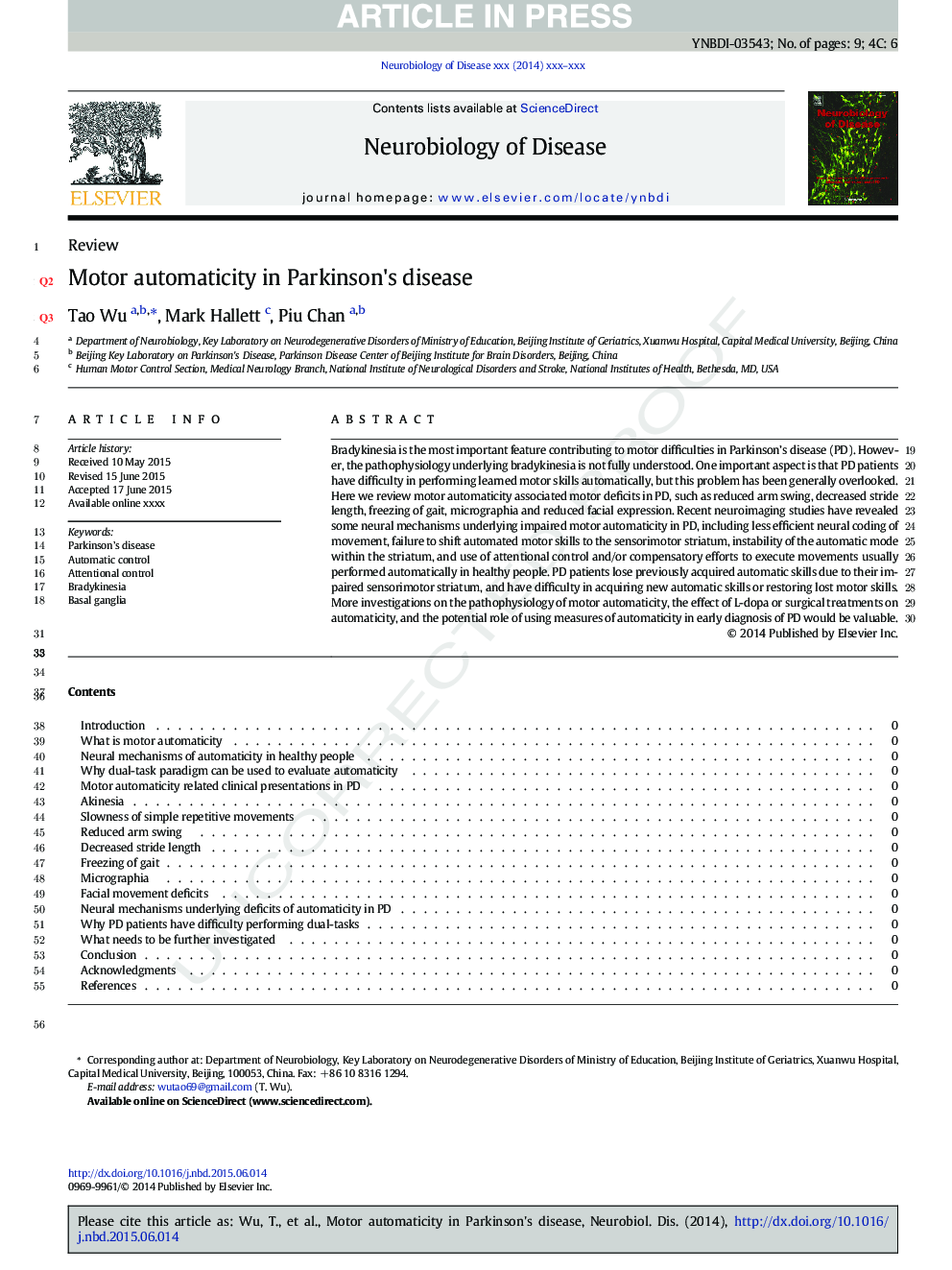| Article ID | Journal | Published Year | Pages | File Type |
|---|---|---|---|---|
| 6021579 | Neurobiology of Disease | 2015 | 9 Pages |
Abstract
Bradykinesia is the most important feature contributing to motor difficulties in Parkinson's disease (PD). However, the pathophysiology underlying bradykinesia is not fully understood. One important aspect is that PD patients have difficulty in performing learned motor skills automatically, but this problem has been generally overlooked. Here we review motor automaticity associated motor deficits in PD, such as reduced arm swing, decreased stride length, freezing of gait, micrographia and reduced facial expression. Recent neuroimaging studies have revealed some neural mechanisms underlying impaired motor automaticity in PD, including less efficient neural coding of movement, failure to shift automated motor skills to the sensorimotor striatum, instability of the automatic mode within the striatum, and use of attentional control and/or compensatory efforts to execute movements usually performed automatically in healthy people. PD patients lose previously acquired automatic skills due to their impaired sensorimotor striatum, and have difficulty in acquiring new automatic skills or restoring lost motor skills. More investigations on the pathophysiology of motor automaticity, the effect of L-dopa or surgical treatments on automaticity, and the potential role of using measures of automaticity in early diagnosis of PD would be valuable.
Related Topics
Life Sciences
Neuroscience
Neurology
Authors
Tao Wu, Mark Hallett, Piu Chan,
